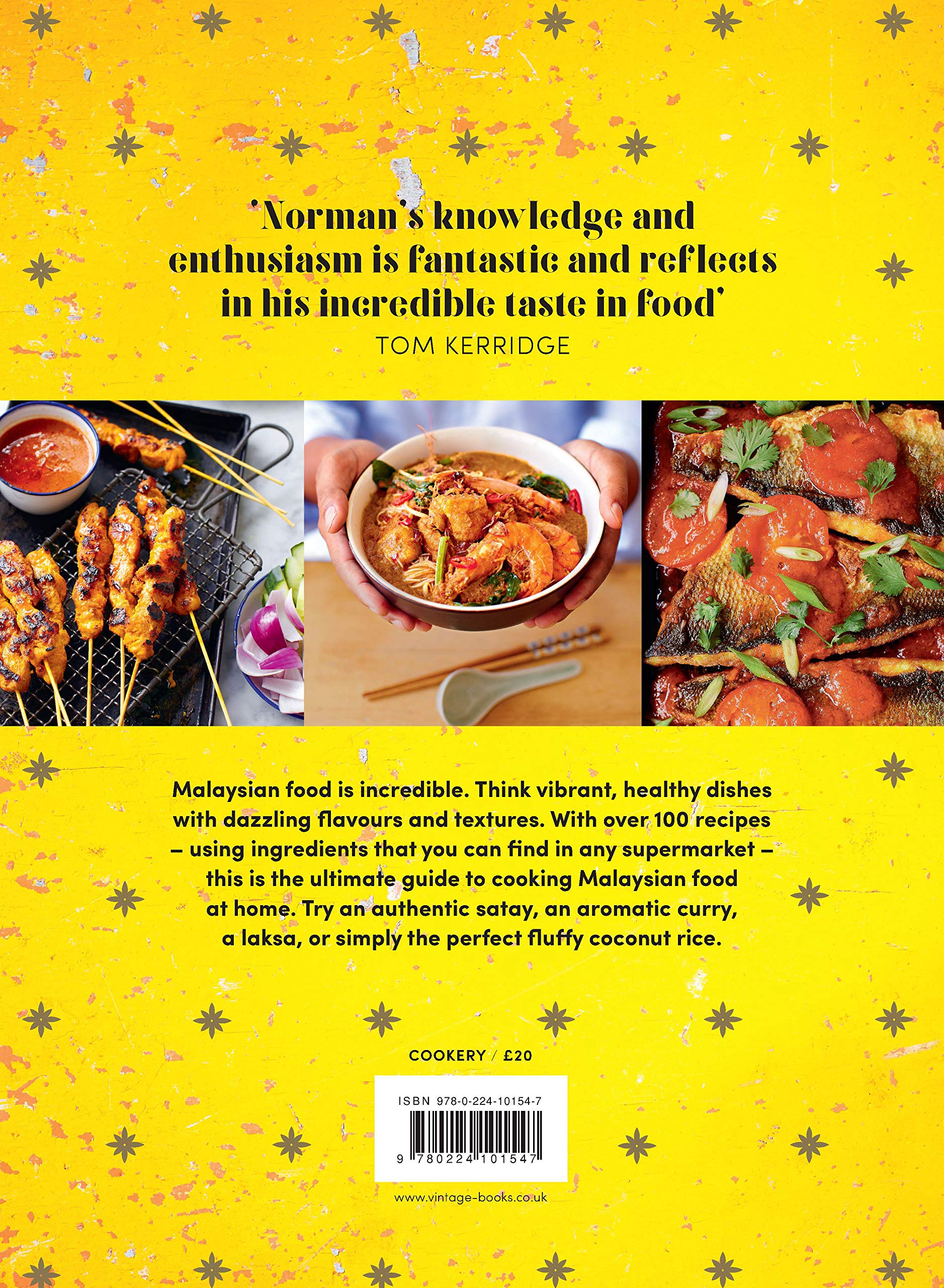Customer Services






Square Peg Amazing Malaysian: Recipes for Vibrant Malaysian Home-Cooking
L**Z
Love this book
For those who don't know, Malaysian food is perfect if you like Thai and Indian. The first time I had Malaysian food was in Scotland; then I spent several months in Malaysia. This book gets me as close to Malaysia as I have ever managed to get. Ingredients can be difficult, but I live in a rural area in the US and can order from Amazon :-)
K**O
A gorgeous introduction to a marvelously diverse cuisine!
When I think of Malaysian dishes, it’s the spicy, layered flavors of Norman Musa’s “Amazing Malaysian” that I think of. It opens with street food and snacks, and moves on to seafood, meat, vegetables, rice and noodles, pudding and drinks, and the Malaysian pantry. Gorgeous photos of street scenes in Malaysia pepper the pages, while the gold-embossed cover looks great sitting out on a table or countertop.You'll find street snack favorites like chicken satay, net pancakes, roti canai, and fried spring rolls, along with Indian lentil patties, grilled fish paste in banana leaf, tofu stuffed with crunchy vegetables, and the gorgeous Kak Besah’s curry puffs. The seafood dishes reminded me of many preparations I had last year while working in Taiwan; whole fish steamed with lemongrass, ginger and chilies, squid stir fry, and scrambled eggs with oysters. The meat dishes featured are mostly chicken and beef (no pork unlike Ping’s book), with lamb curry, beef rendang, and numerous chicken dishes.One of my new favorite recipes is the Nyonya Vermicelli Noodle Salad, which features rice noodles, tofu beansprouts, and ginger with plenty of lime juice and fresh herbs (if you are vegetarian, leave out the shrimp paste and prawns). I also loved the Malay Vegetable Dhal Curry, pumpkin in turmeric and coconut milk, and eggs in chili sambal (think shakshuka).Rice and noodle dishes include tomato rice (nasi tomato), wok-fried flat noodles, curry laksa, chicken rice, herbal rice, and several egg-fried rices in addition to fried noodles. Desserts range from the effortless (fresh mango, honey and coconut, tropical fruit salad) to the more elaborate (pandan custard and sticky rice layered sweet, sticky rice balls, soy panna cotta with passion fruit and crushed chocolate cookies. And you’ll find any number of refreshing drinks, from lemongrass and honey tea and rose syrup drink to pulled sweet tea and iced fresh lime juice.At the end are several staple condiments, from the ubiquitous chili paste and ginger soy sauce to sambals (chili, coconut), sauces, and vegetable pickles.Norman Musa’s recipes tend to be a bit more advanced but also result in more complex, nuanced flavors. This is a gorgeous introduction to a marvelously diverse cuisine!
A**R
Three Stars
Nice book
H**N
Malaysian husband loves this!
My Malaysian husband has been cooking Malaysian dishes for over 3 decades and was so delighted by this book. He's made several great meals out of it. The only thing better is going to Malaysia and having someone else to the cooking!
I**B
As good as it gets!
Malaysian food is undefined due to the country's ethnic mix - and richer for it as a result. Norman Musa digs into his Northern Malay-Malaysian heritage without ignoring the rest of the country and the people. I cooked his Nasi Daging - delicately spiced rice cook in beefy broth - I can vouch for its authenticity. His father's version of Mee Rebus - noodles in rich thick sauce - is something that you find in any good restaurants back in Malaysia. His mother's Karipap Pusing - mild potato curry in flaky pastry - is a delight; step-by-step instructions for those too intimidated by what appeared to be complex endeavour. What is so loveble about this book is that it caters for those who are not in Malaysia but craved good Malaysian food. For example, his Nasi Ulam - herby rice with caramelised coconut cream - subtitutes herbs which are common in Malaysia but impossible to find here in the UK. The result, while not 100% authentic, is as close as it gets. Norman Musa's method of making 'kerisik' is something of a revelation: By using a block of coconut cream, what used to be a labour-intensive coconut concoction was created in a few minutes. Most, if not all, of the dishes can be made with ingredients from the local supermarket. Then, there is a whole array of spice mixes that you can create yourself. I recommend this book for Malaysian food in general. It is useful for that midweek meal and for more adventurous cooking weekends. It is un-intimidating and has the feel of author's guiding hand and wisdom. (Of course there are others that cater for specific ethnic and regional subsets.)
Trustpilot
5 days ago
1 month ago